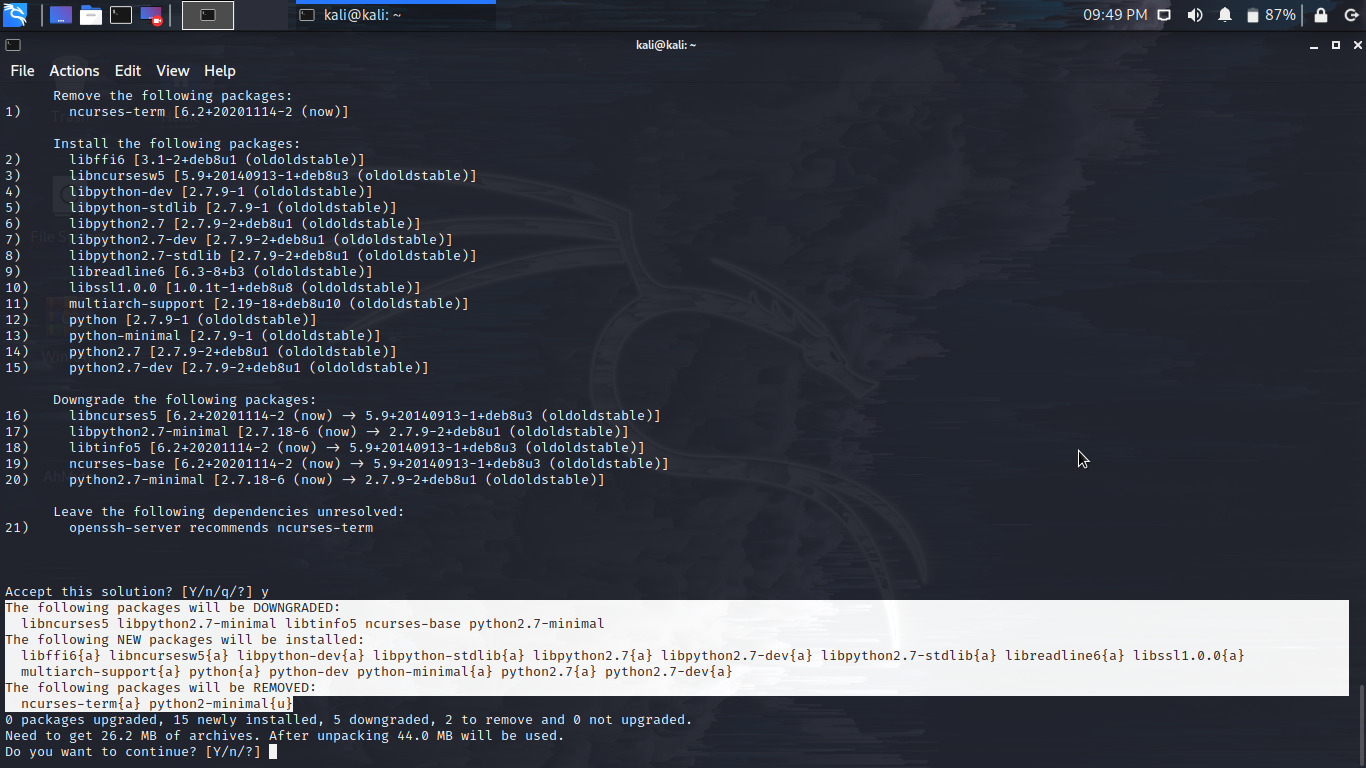
- #Downgrade python to 2.7.9 how to
- #Downgrade python to 2.7.9 install
- #Downgrade python to 2.7.9 license
- #Downgrade python to 2.7.9 download
If you have any questions, please ask a question. You should now have a GPU-enabled version of TensorFlow installed. (C: \ Users \ username \ AppData \ Roaming \ Microsoft \ Windows \ Start Menu \ Programs \ Anaconda3 (64-bit)) If the location of Anaconda Prompt is the default You should now be able to downgrade your Python version from 3.6 to 3.5.2. I don't think it's a good idea to downgrade a library or be 'stuck' on a specific verion so I upgraded the version of python running on the server.
#Downgrade python to 2.7.9 install
Launch Anaconda Prompt and type ** conda install python = 3.5.2 ** to run it. In python versions < 2.7.9 you need to install a set of extra packages (pyOpenSSL, ndg-httpsclient, pyasn1) or you can downgrade the version of requests you are using. Here we downgrade Python3.6 to Python3.5.2, which is supported by TensorFlow. (If you have already installed it, you can skip it.)Īs for the installer, all you have to do is follow the instructions. This article is easy to understand about this, so please take a look here. In Windows, you can do do the following: First, you have to check the availability of all downloadable Python versions: conda search python. Therefore, you have to downgrade your Python version.
#Downgrade python to 2.7.9 download
We will proceed for PCs with NVIDIA graphics boards in a Windows environment. If you download Anaconda 5.3.1, it will install Python version 3.7.

I myself couldn't download the GPU-compatible version of TensorFlow and struggled quite a bit, but it has been resolved so I'll write it here for those with similar concerns. htaccess to redirect automatically.・ It seems that it is better to create a virtual environment with createconda of Anaconda.
#Downgrade python to 2.7.9 license
The first thing to try is to run xcode and accept the license if you recently updated.

HOWEVER, when all of your scripts are written in a Python 2.x way, maybe now isn’t the time to move on having a load of v2.x / v3.x errors can be inconvenient to say. Luckily, Anaconda makes it easy to install packages with the package manager functionality of conda. To make the change over easier, here’s a cheat sheet for writing python 2/3 compatible code. Considering best practise, the way forwards is to move with the times and upgrade.

Some issues I ran into and their solutions: Python 3 is the future and the future is now.
#Downgrade python to 2.7.9 how to
Turns out, creating and making free SSL certificates is not that hard thanks to the good people at EFF. There’s a very helpful blog post by Isabel Castillo that outlines how to do it. I’m not here trying to sell things or get your credit card information - SSL is a nice-to-have-but-not-$5-per-month-nice-to-have item. I’m stereotypically Asian so $5 per month on a personal blog just seems excessive. I’ve also been getting relentless phone calls from GoDaddy salespeople asking me to buy SSL certificates for about $5 per month. I tried to switch using brew and pyenv but it doesn’t work. Since Google’s announcement that they will start publicly shaming unsecured websites in January 2017, everybody has been rushing to try to get their https tags. Question or problem about Python programming: I’m trying to install tensorflow but it needs a Python 3.6 installation and I only have Python 3.7 installed.


 0 kommentar(er)
0 kommentar(er)
